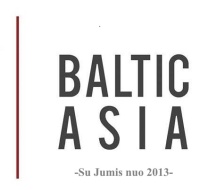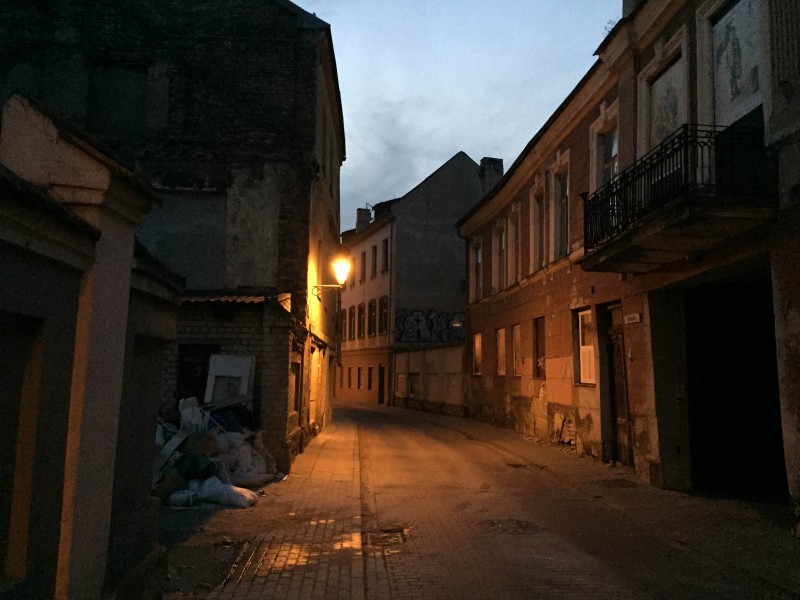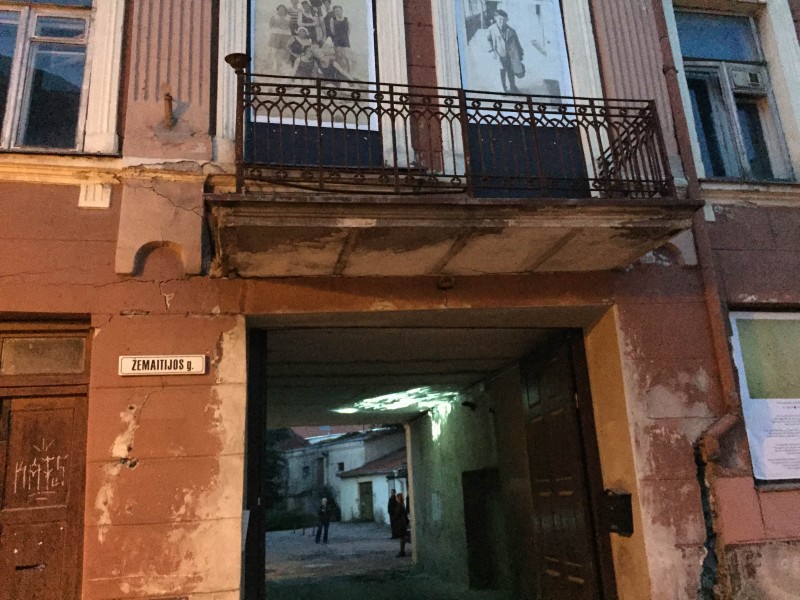Lithuanian Holocaust, background of “Visas for life”
Whilst people in Japan excitedly longed for “Silver Week”, a series of national holidays in the third week of September, I looked at the Lithuanian calender enviously. Lithuanian national flag was on September 23, but it doesn’t seem to be a day off of university. I googled, then I noticed that day was Lithuanian Holocaust memorial day.
Before World War Two approximately 220,000 Jewish people dwelt in Lithuania. Jewish and non-Jewish people were in co-existence through centuries all over Lithuania. Through Nazi occupation, however, ghetto created and massacre executed. More than 90% of 220,000 Jews were exterminated by German forces and some Lithuanian Nazi collaborators.
Once Vilnius, capital city of Lithuania, was called as “Jerusalem of the North”. There was more than a hundred of Synagogues, and Jewish culture was flourished. Right before World War Two started, the number of Jewish people living in Vilnius is 100,000 which occupied 45% of the whole Vilnius population. Lithuania became under control of Nazi Germany after the Soviet-Germany War. Massacre implemented at the city close to Vilnius called Paneriai. Jewish who wasn’t killed were forced to live in Ghetto. September 23 is the day Vilnius Ghetto was liquidized.
Word combination between “Lithuania” and “Jews” might remind one of “Chiune Sugihara” widely known as “Visas for life”. 2,000 visas he issued saved 6,000 of lives. Important thing to notice is that, however, there were immense number of lives which weren’t saved. Lives unsaved behind lives saved.
“Righteous Among The Nations” is a praise bestowed to non-Jews who risked their lives to save Jews during the Holocaust. As Japanese, Chiune Sugihara and ,moreover, 800 Lithuanian were praised. At the same time, in fact, there were some Lithuanian Nazi collaborator who helped execution. Nowadays 3,000 Jewish people reside in Lithuania.
“Names” recalls the past to the present
On September 22, on the eve of the Lithuanian Holocaust Remembrance Day, names and Jobs of Holocaust victims was read all over Lithuania.
Reading names and jobs of Jews, who certainly inhabited in Lithuania, makes one recall both their presence and absence. These events are initiated by groups named “VARDAI” meaning “Names”, plural of “name” in Lithuania. This was organized for fifth time. This event took place not only in Vilnius but also other small villages in Lithuania.
The venue in Vilnius was the courtyard of the Vilnius Ghetto Library. It located in out of the busy district. Monochrome photographs of a variety of Jews lived there were hanged on a wall of the building. A map of past Vilnius Ghetto was hanged as well. Ghetto surely existed right next to the street on the way to come there.
Passing through a gate, I saw people gathering there. It seemed to be rigid atmosphere. When visited, there’s around 15 persons from a child carrying a dole to elderly person.
One lady stand in the middle of the yard. She had a book and read each person’s name and occupation. What’s written in the book is the names and jobs of Jews lived here in Vilnius ghetto. Others surrounding was gazing her with silent. Few minutes after, other person took turns and started to read it again. There was no signal of changes.
Whilst names were read in the yard, sound of moving pedestrians and cars outside reached inside. Outside there’s people spending a daily life as same as other days. Conversely, there’s people gathering for commemoration inside. A inheritance of the memory is lonesome but firm.
Six of same family names were read. It means that freedom of six people was deprived of. A variety of occupations like Mokytojas(teacher), Elektrikas(electrician) ,Dailininkas(painter) and so on were recited.
Standing at the yard I could sense a tension, and just saw each person calling their names and occupations. Stepping forward to take turns had difficulty. Eventually the word “Studentas” spurred me on stepping forward and standing next to the man. Telling me where to start from, he hand the book to me. It’s three centimeters thick, light more than expected. Practiced book which has some pages about to miss. Opening it, I faced with a hundred of first name, family name, occupation and address. It looked statistics, actuality not. Each name contains each life. Those names, representing people’s lives, made me hold back from starting to call their names.
After a few tens of seconds, uttering name, a variety of lives were finally in front of me. There’s Lithuanian name, Polish name and, furthermore, first name “Izrael” four times. Several times, several continuous same family name. When encountered to two pageful of lives, it’s time to hand it to a successor. I was wondering how long does it take to read it. It was both long and short period for me.
This event was supposed to take place from 3PM to 9PM. Still a lot of pages, though the time I finished to read was around 8PM. Nobody knows when is the end. The book itself was holding more immense lives of people than it looked. It represents hugeness of numbers of Lithuanian Holocaust victims.
Spending some amount of time after that, I left the courtyard. From the street I saw a building of the library again, and stared at photos of boys and a lady once settled in the ghetto. Recital of names by young lady still reached street outside the building. It echoed her voice in the more gloomy street than forward.
Once I met with Sugihara Survivors, I realized greatness of his decision to issue visas. At this time, I encountered an occasion to read “Names”. Then I could feel a part of tragic history occurred in Lithuania and the inheritance of its history. On top of that, I appreciate that everybody welcomed me there.
We tend to consider race, ethnic, nationality as a whole. When I cast their eyes to Europe, there’s large refugee crisis never experienced since World War Two. “Refugee” has each name and each life. Things we have to consider might be the same.



